
A PANDEMIC INTERVIEW: We first posted this interview on June 11, 2020. We are reposting it here in celebration of PRIDE month and PrideVMC: Ellen Lowery, DVM, PhD, MBA was selected as the new director of the Veterinary Teaching Hospital at Purdue Veterinary School of Medicine effective February 1st, 2020. Not too soon after, the COVID-19 pandemic hit the U.S., shattering dreams and expectations of what this new chapter in her life and those around her would be. Typical of her demeanor, Dr. Lowery took it all in stride. We caught up with Dr. Lowery as the “new normal” continued to unfold.
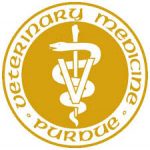
Congratulations on your appointment as Director of the Veterinary Teaching Hospital at Purdue. We usually start off our veterinary interviews with how did you get started in veterinary medicine, but our new normal is how are you and how are those around you holding up?
It has definitely been challenging for everyone, with many uncertainties and changes. Our clients have been very understanding. The faculty, veterinary nurses and the entire staff throughout the hospital here have really gone above and beyond doing whatever needs to be done to provide for the animals in our care.
As someone who taught One Health, it’s amazing that we’ve talked about the real possibility of a global pandemic, but when it actually happened, you realize all the detailed impact on society and day-to-day life. What I’ve really appreciated is watching the innovation of billions of people and the way people are coming up with ways to stay connected. We are really an amazing society.

It’s Pride Month and you are a board member of the Pride Veterinary Medical Community (PrideVMC). Diversity is an important issue to you. The board just came out with a statement of solidarity with black, brown and all people of color within the profession. What can be done to help keep the issue of diversity and inclusion front and center?
It’s really important with that statement we’re advocating for diversity and inclusion. The Pride Veterinary Medical Community is committed to acting to end racism, discrimination, and brutality.
We’re not just saying the words, we are committed to actually implementing the behaviors and providing education and training. There’s so much great research that points to the power of diversity and inclusion, that when you bring together diverse populations, the outcome is so much richer. I hope we never forget that.
As you think about diversity, one of the threats to diversity and inclusion is that it is sometimes viewed, as this is the newest buzz thing to do, so let’s all do this. We have come so far as a society and so many good things have happened that it’s easy to think that there is no longer a need for a focus on diversity and inclusion. That’s unfortunately not the case. There is still so much discrimination and impact on marginalized communities.
Everyone is guilty of some sort of bias or discrimination, whether it’s intentional or not. We can continue to educate ourselves, be aware of the bias and discrimination, and respect that not everybody looks and acts the same. Let’s harness the positive power of those differences, and support everyone in being their authentic self and valued for who they are.
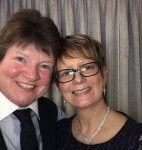
You are standing up for what you believe in, and operating during the pandemic. How were you able to pivot during the initial stages of the pandemic?
Thankfully things came together very quickly to build working relationships throughout the college so that we could put in place the needed protocols to keep the team and our clients safe, and still provide necessary veterinary care. We needed to consider the farm animal and community needs, and be mindful of the educational needs of the students. Public health has been our focus throughout the pandemic.
I started my new position on February 1st and by the end of February, early March, we were facing the challenges of managing as a University, a college, and a teaching hospital with the COVID-19 pandemic. In the midst of all that, we moved from our home in Kansas to our new home in Indiana. It was a very stressful time, however I am so excited to be here. Purdue is a stellar University and I’m grateful for the opportunity to be a part of the leadership of the College of veterinary medicine and work with such a talented team.

What is the situation at the Purdue Veterinary Teaching hospital now?
We never fully closed, as most veterinary hospitals are an essential business. We went through phases of treating only medically necessary, urgent and emergency cases. Then we went to the next stage, which was seeing urgent and emergency cases only. Then we went to our students not being physically present in clinical rotation, finishing their clinical learning through virtual rounds and medical education.
Our class of 2020 students have graduated and we’re getting ready to onboard the class of 2021 that will be entering their clinical year. Initially they will participate in virtual education and prepare for their national exam before entering clinical training in July. Our interns and third year residents are completing their programs and we’re preparing for orientation of the incoming house officers.
The hospital has shifted back to seeing elective cases, based on our supplies of personal protective equipment. We have our full clinician, veterinary nursing, and staffing teams all on board in our hospital. We are still doing client car side service to support social distancing. Clients phone us when they arrive with their animal and someone from the hospital team meets them in the parking lots to retrieve the animal. Members of the hospital team are in frequent communication with each client as their animal receives an examination, diagnostics and appropriate treatments. Our clients have been amazing and I’m so appreciative of their flexibility and patience with these necessary protocols.
That’s interesting when you say you’re still doing the car service. Is that something that you anticipate into next year? Do you think that’s one of the things that’ll be forever changed?
Out of a crisis comes new ideas. You’re forced to think about new ways to do things. I anticipate that there could be a blend of services offered to clients, to provide convenience alongside expert care.
We will continue to follow the CDC and the AVMA guidelines for public health measure during the pandemic. These precautionary measures keep both our clients and our hospital team safe, so we are able to provide the best animal care possible.

Now let’s go back to the very beginning of how you decided to become a veterinarian. Can you tell us that story?
I knew I wanted to be a veterinarian from a very young age. It was driven from a sheer compassion for animals. I truly was that little girl that wanted to take care of any animal that came across my path. I was the one that was always bringing home the strays, and whenever I saw an animal in need, I wanted to take care of that animal.
As I grew up, I realized that there’s a lot more to taking care of animals from a veterinary medicine perspective than just the warm fuzzies. I also realized that the part of my brain that really got activated was when I was problem solving. It just became a real natural fit for me, with my compassion for advocating for animals and my interest in the scientific process, medicine, and problem solving.
My parents did the best they could, but they weren’t actively involved in preparing me for a college education. Out of four children, I was the only one that went to college. I just figured it out on my own. I grew up in Nebraska and I knew that Kansas State University had a veterinary school. I applied as an undergraduate to K-State and got accepted. After high school graduation I moved to Kansas. I still didn’t quite understand how the whole college thing and how veterinary school worked!
I had a goal and I had passionate desire to be a veterinarian. I worked two jobs in undergraduate going to college full time. During veterinary school, I worked as a waitress about 20 hours a week. Honestly I struggled and I probably made every mistake in the book, but I had perseverance. I just did whatever it took to achieve my goals.
My dream of becoming a veterinarian evolved over time; initially it was a desire to care for animals. I thought that I would pursue becoming a large animal veterinarian; as I progressed through veterinary school, my interest turned more toward small animals.
After veterinary school I worked in small animal medicine, and then I had the opportunity to return to Kansas State University to pursue my PhD. That is really when everything clicked together for me. It really allowed me to combine my scientific love with my desire to advocate and provide a better outcome for animals.
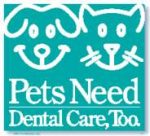
When we met, my team and I had just created “Pet’s Need Dental Care, Too.” You were working at Hill’s Science and Technology Center on dentistry research. Later as president of the American Veterinary Dental Society you toured as the spokesperson. How did you get so involved in the specialty of veterinary dentistry?
Some of the best times of my career involved ‘Pets Need Dental Care, Too’ and all the great work that was done to elevate the importance of pet oral health. I remember my two week media tour from New York all the way across to Los Angeles – opportunities I never dreamed of when I was five years old and declared that I was going to be a veterinarian when I grew up!
Back to your question on how I got started in dentistry — when I was working on my PhD, my professor at Kansas State University was approached by Drs. Dan Richardson and Mike Hand at Hill’s Pet Nutrition, Dr. Mark Morris, Jr. with Mark Morris Associates, and Dr. John Hefferren, from the University of Kansas. They were working together in a collaborative research effort to develop a food that would effectively clean the teeth of dogs and cats.
My professor mentioned to them that he had a new graduate student, that’s how I got involved in working on plaque and calculus control methodology. It was really new to veterinary dentistry. A lot of great work had been done in human dentistry, but that had not yet translated to the veterinary dental community or the field of veterinary dentistry.
We developed methodologies to evaluate dental substrates, plaque, tartar, and stain, along with evaluation of malodor and gingivitis. In addition to measuring substrate accumulation, we were working on understanding how foods, and ingredients, could contribute to better oral health.

At the same time, Dr. Colin Harvey was working with different organizations on how to create a scientifically valid process to assess trials conducted to demonstrate efficacy for reducing plaque and tartar accumulation in dogs and cats. After years of cross collaboration with various professional organizations and scientific experts, the Veterinary Oral Health Council or (VOHC) was established.
Dr. Harvey was the Director of the VOHC since its establishment in 1997 and I was hired in 2019 to be his successor. I had a great career with Hill’s Pet Nutrition, working in research and development, in marketing, management and as a part of the senior leadership team. I moved on from the company to take an academic position at my alma mater, and being courageous enough to take that leap opened up new opportunities. Working in academia provided the stepping-stone to combine my leadership and business acumen from my years in the corporate environment, with my academic experience, and accept my current position as Director of the Veterinary Hospital at Purdue University. It also afforded the opportunity for me to return to my dental research roots and step into the VOHC Director position.
As the Director of the VOHC I lead the strategic direction and evolution of the organization, working closely with the American Veterinary Dental College, to ensure protocols are scientifically sound. VOHC has nine council members with expertise in veterinary dentistry and research, that review and vote on all submitted trials.
The dental category has just exploded since the Pets Need Dental Care, Too campaign was launched in 1995 and the VOHC was formed several years later. Do you see the category continuing to grow?
Pets are a very important part of our lives. I read in a recent Goodnewsforpets.com article that the pet industry is a $97 billion industry. The dental category certainly continues to grow. I’m proud of the role of the Veterinary Oral Health Council in reviewing trials, and providing a Seal of Acceptance that gives pet parents assurance that the product they are purchasing for their pet is safe and effective. Products must meet established criteria from trials conducted according to VOHC protocols to be eligible for the VOHC Seal of Acceptance and not all products are able to meet these criteria. Oral health is critical to overall health and I’m delighted to see the interest and care from pet parents.
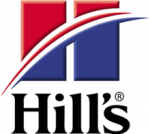
Getting back to your time at Hill’s Pet Nutrition, are there other interesting aspects that you want to mention about your 23-year career there?
You used an interesting word early in our interview, and that was pivot. I had the opportunity to have an exciting, challenging career at Hill’s full of opportunities working in the veterinary industry. Certainly, opportunities I never thought I would have as that young girl with a dream of becoming a veterinarian.
I learned so much about business, about collaboration, about team building, about working across different departments that was instrumental in my professional development. My career evolved from a decade of working in the research and development side of the business, to taking on commercial roles in the marketing and customer development teams. Being willing to take those opportunities developed my knowledge and skills across the veterinary and the animal healthcare industry.
You are now Director of the Teaching Hospital at Purdue. Are any of those business skills applied to what you’re doing now?
One of the reasons that the search committee felt that I was the most qualified candidate for this position was the breadth of my business experience. I brought to this position knowledge of the veterinary and animal health industry, relationships across the veterinary profession, and also an understanding of the business side of the profession.
That combination was what put me in a position to be eligible for this role as director of a teaching hospital. It’s very intimately associated with veterinary medicine, and also requires an ability, and desire, to work with a broad group of individuals that make up the team necessary to have a successful hospital.
Would you recommend other veterinarians consider a career in industry?
As veterinarians, we’re wired to the scientific and medical thought processes, but, we’re more than that — we’re problem solvers and compassionate professionals. Working for an animal health company provides broad opportunities to build additional skillsets, such as cross-functional collaboration and business acumen. I think it’s a great combination of applying veterinary knowledge and business skills for the betterment of animal and human health.
Most of us think about being a veterinarian in a traditional practice. We think about going to veterinary school so that we can provide medical care to animals. Not many think about industry, government or medical work that can be done with a veterinary education. I’m an example of someone that knew I wanted to be a veterinarian, but never dreamed that I would be a veterinarian doing what I’m doing today.

Before you came to Purdue you went from Hill’s Pet Nutrition, Inc. to K-State. What were your responsibilities there?
I was a teaching professor at K-State’s satellite campus in Olathe, Kansas. It was fantastic because that gave me the opportunity to be a little more innovative in some of the things that we were doing and bring that education to the Kansas City area. Because of my background and the fact that I had a PhD in pathobiology, I was able to become faculty with those departments as well, which means that I was able to contribute to the teaching. My primary role was teaching and supervising graduate students at the Olathe campus.
Was that your favorite part of the job at K-State?
It really was. One of the things that drew me back into academia was my passion for education and for teaching. That runs the gamut of formal higher education. I’ve always enjoyed mentoring, educating and teaching in whatever way that might look like. I enjoyed working on courses, developing courses, teaching the students and supervising several graduate students. That was the heart of what I really loved, the connection with the students and the collaboration with other faculty.
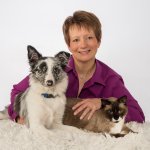
Is there anything else you’d like to share with the Goodnewsforpets community at this challenging time?
I would like to share my gratitude for that the recognition of the importance of animals in our society. We think about global sustainable health, everything from the human-animal bond to food security, and recognize how important that is. In regards to the pandemic, as uncertain as the future is right now, remember that we are a strong society and we have navigated crisis and heartache before. In regards to championing diversity and racial equality, you brought up a good point earlier about the environment the pandemic creates. People are struggling to stay connected. There is a lot of uncertainty, anxiety and fear. It’s being able to recognize that and still be open to conversations and advocating for what is right. We would be a much richer society if that were the case. In the end I am confident we will come through this stronger, together.
Thank you Dr. Lowery for all you have contributed to veterinary medicine. I so enjoyed our work together on educating the general practitioner and the general public on oral care for pets. Thank you for contributing to our 20th anniversary of Goodnewsforpets.com. I’m excited to see this next chapter of your career unfold. And, the fact that you are leading the VOHC does indeed bring this story full circle! Be safe and be well. It’s always a pleasure! – Lea-Ann Germinder
Follow Purdue University School of Veterinary Medicine:
Instagram: @pucvm
Twitter: @pucvm
Facebook: @PurdueVeterinaryMedicine
Reposted from June 11, 2020.
